Description
Characteristics
No Reviews
Description
Summary
HTCC-AB01 (V2) belongs to Cubecell (TM) Series made by the Heltec team, mainly for LoRa/LoRaWAN node applications.
HTCC-AB01 (V2) is based on ASR6052, the chip is already integrated with the PSoC® 4000 series MCU (ARM® Cortex® M0+ Core) and SX1262. We have done a lot of migration and development, made it perfectly support Arduino®, can run the LoRaWAN protocol stably, and can easily connect lithium batteries and solar panels.
HTCC-AB01 (V2) is a Dev-Board. Which is an upgraded version of HTCC-AB01, and can pin-to-pin placement with the previous version.
Compared to AB01 Dev-board , V2 has made the following upgrades:
| Item | HTCC-AB01 | HTCC-AB01(V2) |
|---|---|---|
| Item MCU | HTCC-AB01 ASR6501 | HTCC-AB01(V2) ASR6502 |
| Item USB Socket | HTCC-AB01 Micro USB | HTCC-AB01(V2) USB Type C |
| Item Crystal Oscillator | HTCC-AB01 Ordinary crystal oscillator | HTCC-AB01(V2) High precision temperature compensated crystal oscillator |
| Item Other Update | HTCC-AB01 | HTCC-AB01(V2) Better impedance matching of RF circuits. |
Main Features
- Perfect Arduino-Compatible!
- CE and FCC certification;
- Based on ASR605x (ASR6501, ASR6502), those chips are already integrated the PSoC® 4000 series MCU (ARM® Cortex® M0+ Core) and SX1262;
- LoRaWAN 1.0.2 support;
- Ultra low power design, 3.5uA in deep sleep;
- Onboard SH1.25-2 battery interface, integrated lithium battery management system (charge and discharge management, overcharge protection, battery power detection, USB / battery power automatic switching);
- Good impendence matching and long communication distance.
- Onboard solar energy management system, can directly connect with a 5.5~7V solar panel;
- Micro USB interface with complete ESD protection, short circuit protection, RF shielding, and other protection measures;
- Integrated CP2102 USB to serial port chip, convenient for program downloading, debugging information printing;
Specifications
| Parameters | Description |
|---|---|
| Parameters Master Chip | Description ASR6502 (48 MHz ARM® Cortex® M0+ MCU) |
| Parameters LoRa Node Chip | Description SX1262 |
| Parameters Frequency | Description 433MHz, 470~510MHz; 863~870MHz, 902~928MHz |
| Parameters Max. TX Power | Description 21d B ± 1dBm |
| Parameters Max. Receiving Sensitivity | Description -134dBm |
| Parameters Hardware Resource | Description 1*SPI; 1*I2C; 1*UART; 1*12-bit ADC; 1*SWD; 8*GPIO; 2*PWM; 8-Channel DMA engine |
| Parameters Memory | Description 128Kbites FLASH; 16Kbites SRAM |
| Parameters Power Consumption | Description Deep Sleep 3.5uA |
| Parameters Operating Temperature | Description -20 ~ 70 ℃ |
| Parameters Dimensions | Description 40.64 * 22.86 * 7.6 mm |
| Parameters Interface | Description Type-C USB; LoRa ANT (IPEX 1.0); SH1.25; 2*2.54*11 Pin Header; 1*2.54*2 Pin Header |
| Parameters Battery | Description 3.7V lithium battery power supply and charging |
| Parameters Solar Energy | Description VS pin can be connected to 5.5 ~ 7V solar panel |
Description
Pin Map
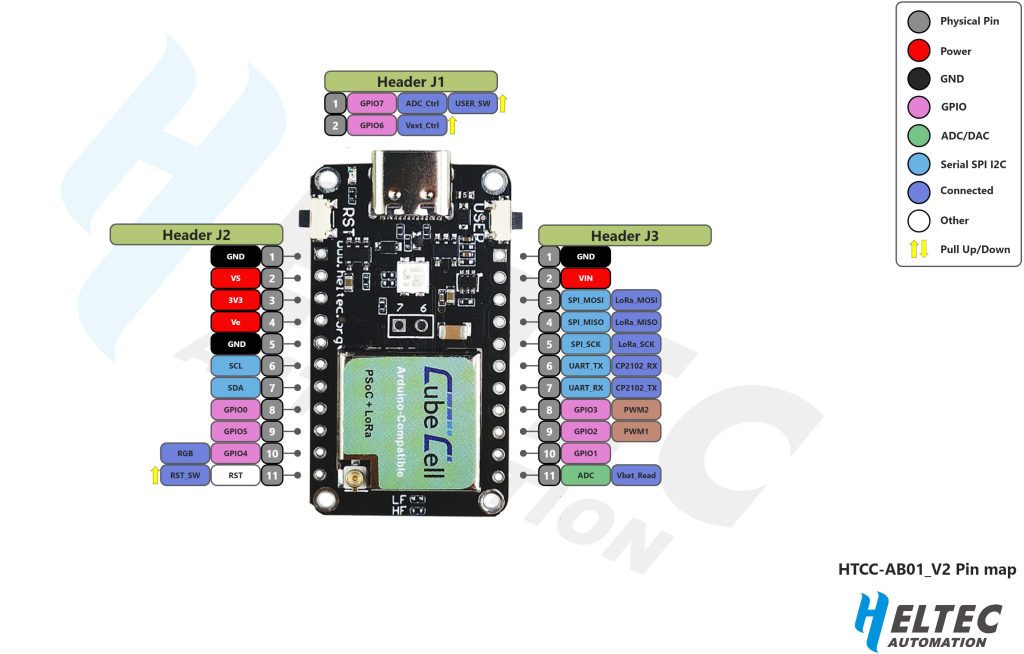
High light
Arduino-Compatible
We have done a lot of migration and development, made it perfectly support Arduino®, can run the LoRaWAN protocol stably.
FAQ
LoRa is a wireless technology utilizing radio modulation generated by Semtech LoRa transceivers.
LoRa® is a wireless modulation technique that uses Chirp Spread Spectrum (CSS) technology. CSS encodes information using wideband linear frequency modulated chirp pulses. LoRa® can operate on the following sub-gigahertz ISM (Industrial, Scientific, and Medical) bands without requiring a license: 433 MHz, 868 MHz, and 915 MHz. These bands are reserved internationally for industrial, scientific, and medical uses.
If you need to add LoRa connectivity to your projects, Arduino® has got you covered with a range of boards, addons, and libraries.
LoRa can transmit up to 3 miles (5 kilometers) in urban areas and over 10 miles (15 kilometers) in rural areas with line of sight.
LoRa technology has become the go-to solution for connecting IoT devices due to its wide acceptance. It offers the flexibility of long-range connectivity and low-power consumption, making it suitable for various fields like industrial IoT (IIoT), smart environment monitoring, smart agriculture, smart homes and cities, smart utilities and metering, and smart supply chain and logistics. Its low-power features make it perfect for battery-operated sensors and low-power applications.
Docs & Resource
- [Source Code] — Cubecell Arduino Framework
- [Resource] — Quick Start
- [Resource] —Datasheet
- [Resource] —Schematic Diagram (heltec.cn)
- [Resource] — Hardware Update Logs
Project
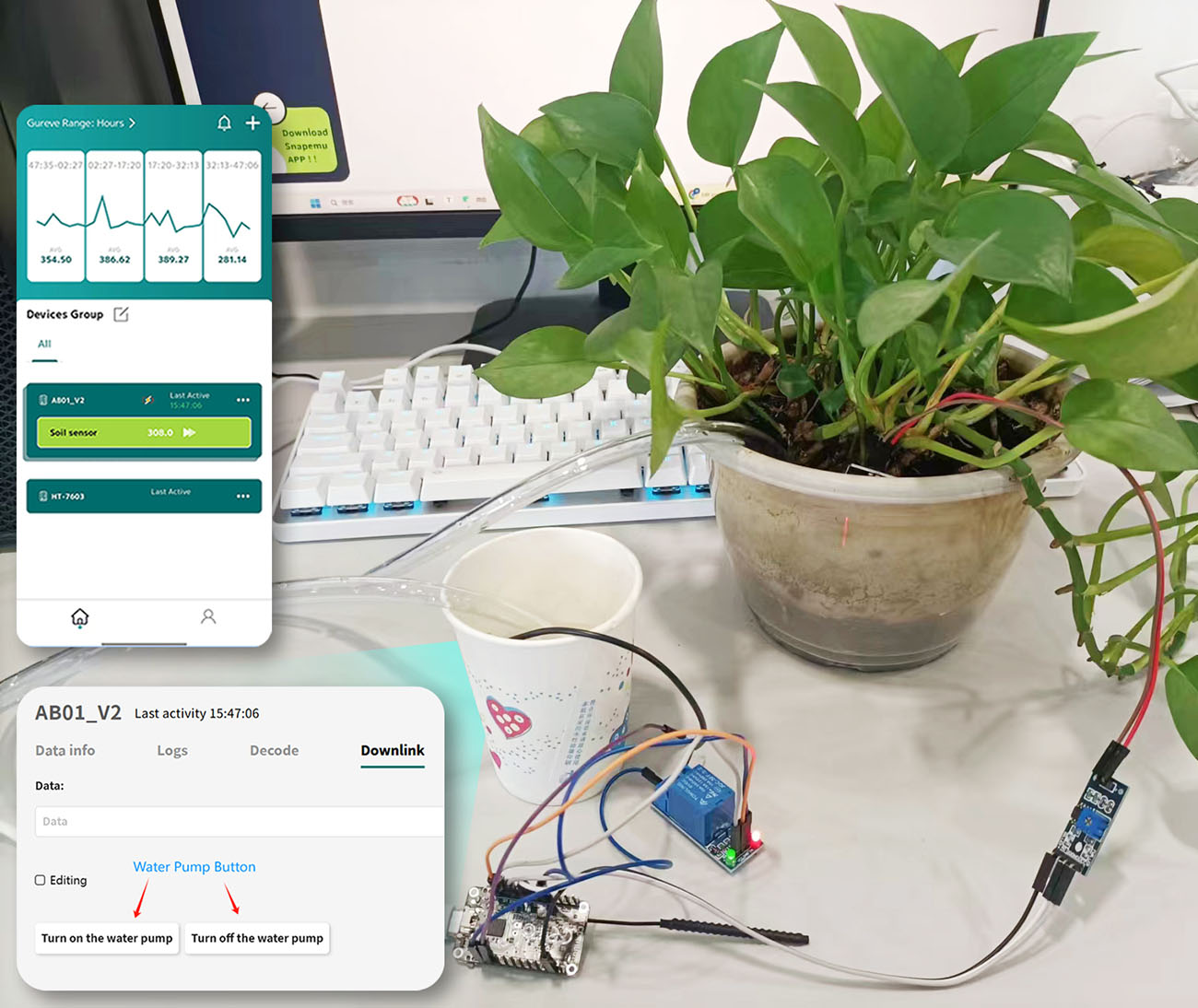
Packing list
The default packing list without selecting any accessories is as follows:
| Item | Quantity |
|---|---|
| Item Cubecell AB01 Dev-board | Quantity x1 |
| Item Antenna | Quantity x1 |
| Item SH1.25×2 Battery Connector | Quantity x1 |
Characteristics
| Weight | 26 g |
|---|---|
| Dimensions | 6.6 × 6.6 × 2 cm |
| LoRa Band | 433MHz, 470~510MHz, 863~870MHz, 902~928MHz |
No Reviews
Be the first to review “CubeCell – AB01 Dev-Board (V2)”
You must be logged in to post a review.
CubeCell – AB01 Dev-Board (V2)
What's this?
LoRa development board integrated with MCU
$13.90

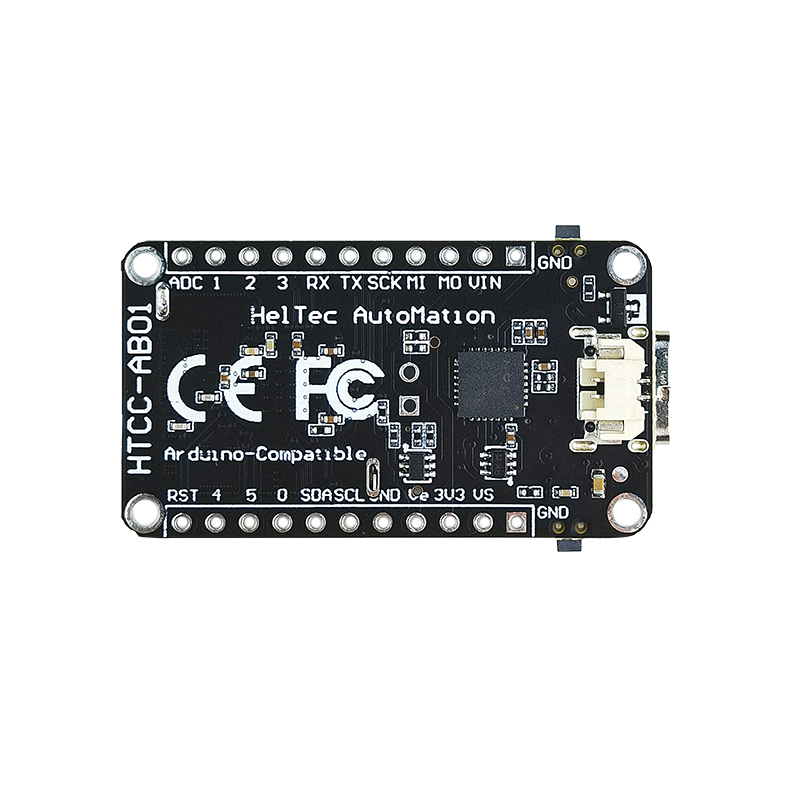
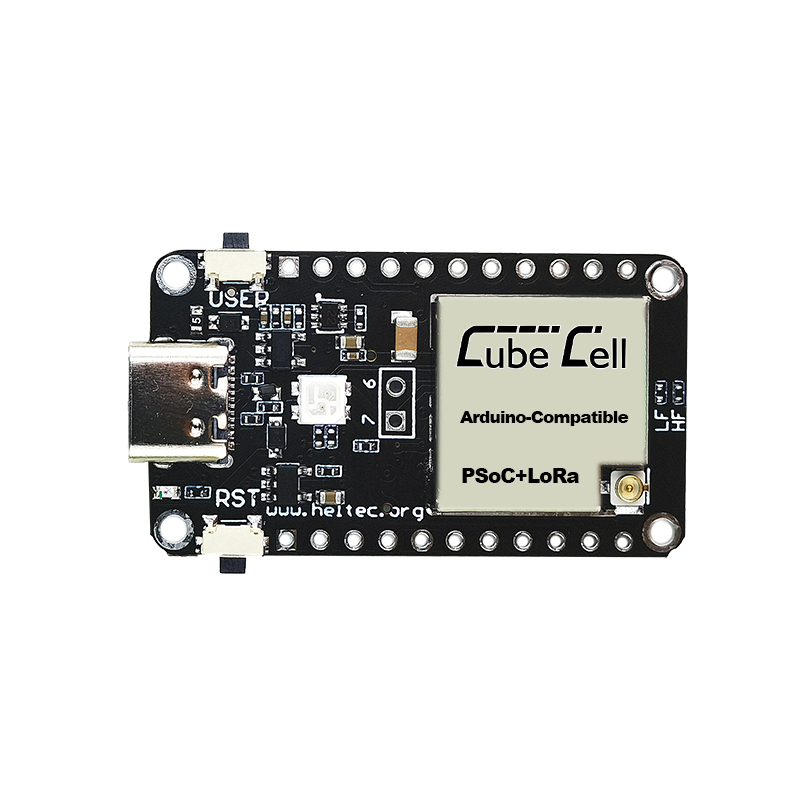
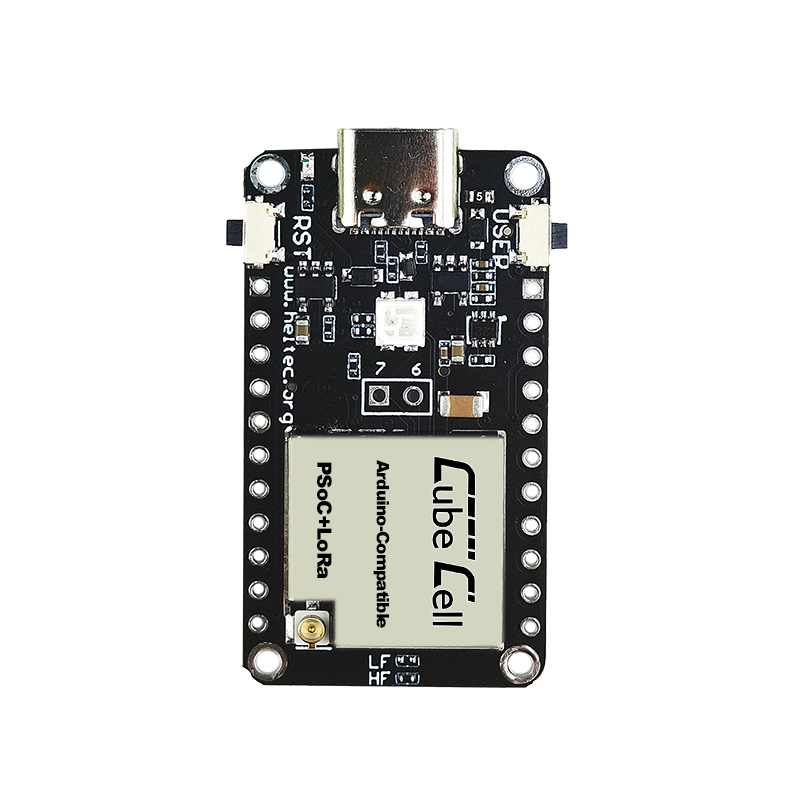

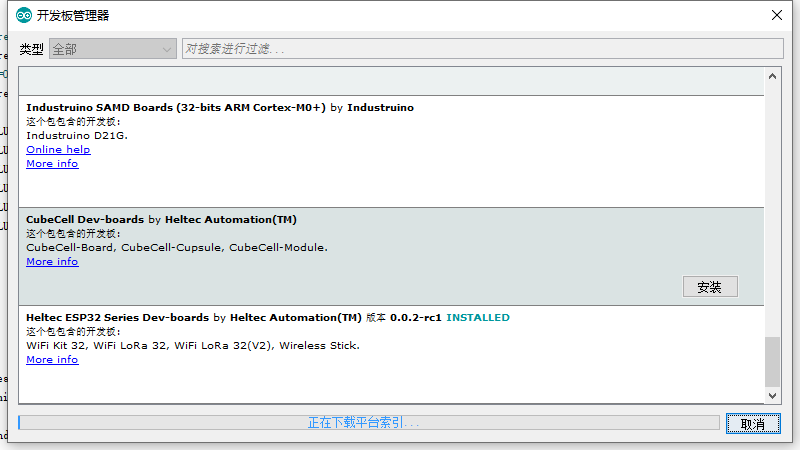


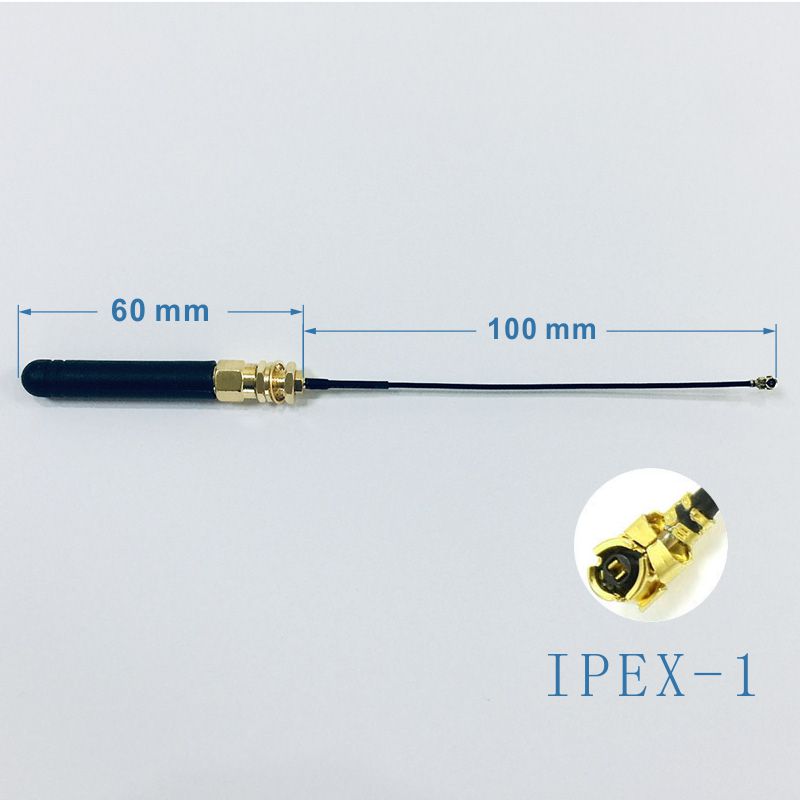
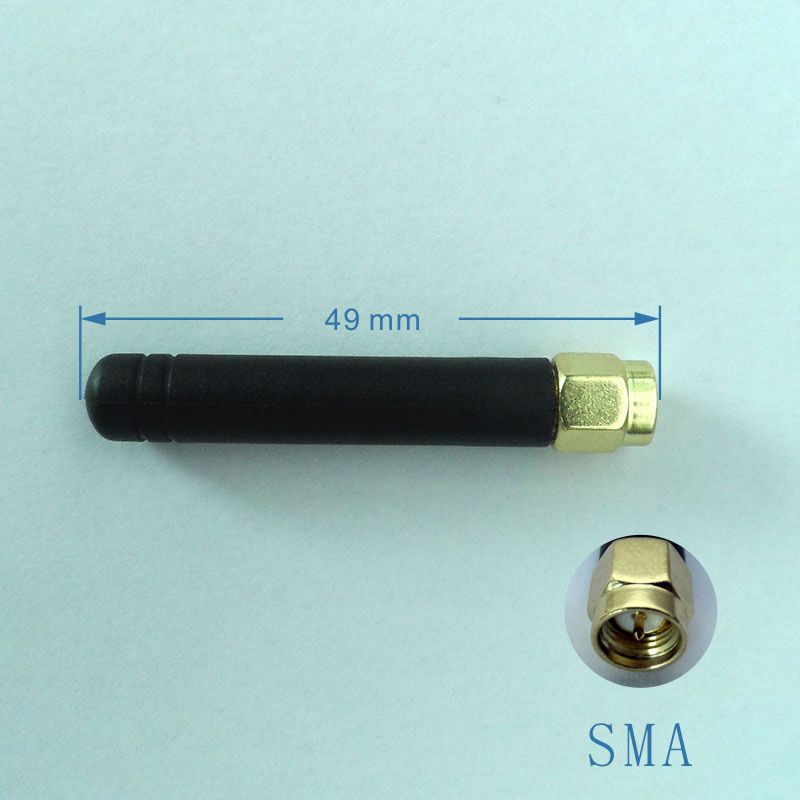
Reviews
There are no reviews yet.